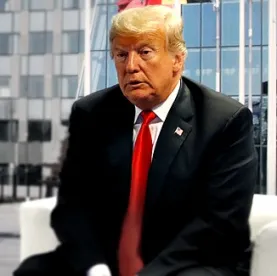On August 8, 2020, President Donald Trump issued a “Memorandum on Deferring Payroll Tax Obligations in Light of the Ongoing COVID-19 Disaster” (the “Presidential Memo”) that directs the Secretary of Treasury to use his authority to defer the withholding, deposit, and payment of the employee share of Social Security taxes (the 6.2% tax on wages paid—not earned—up to $137,700 for 2020) on certain wages paid during the period of September 1, 2020, through December 31, 2020.
The Presidential Memo proposes temporary deferral, not forgiveness, of Social Security tax obligations for some employees.
The Presidential Memo directs the Secretary of Treasury to issue implementing guidance on the deferral, which would apply only to employees with wages or compensation payable during any bi-weekly period that is generally less than $4,000 each bi-weekly payroll period (or $104,000 per year) on a pre-tax basis. The amounts deferred are to be ultimately remitted without additional payments, such as interest, penalties, or other additional amounts or taxes.
Additionally, while the Presidential Memo does not forgive any payroll taxes deferred, it directs the Secretary of Treasury to explore legislative and other avenues to eliminate the obligation to pay the deferred taxes.
Note that although the Presidential Memo and commentary—including this Advisory—refers to “payroll taxes,” the deferral provided by the Presidential Memo does not apply to the employee portion of Medicare or Additional Medicare taxes, i.e., the 1.45% or 0.9% tax on wages paid without a limit on employee compensation.
Nor does the Presidential Memo apply to the employer portion of Social Security taxes or Medicare or Additional Medicare taxes. The Coronavirus Aid, Relief, and Economic Security (“CARES”) Act already gives employers the option to defer payment of the employer portion of Social Security taxes for the period of March 27, 2020, through December 31, 2020, with 50% of the deferred taxes to be paid by December 31, 2021, and the remaining balance to be paid by December 31, 2022.
The Presidential Memo might be subject to legal challenges.
The Presidential Memo, which has the same effect as an executive order, raises questions about the Executive infringing upon Congress’s enumerated powers under Article I of the Constitution. Given that the Presidential Memo seems to usurp Congress’s powers to make laws, collect taxes, and spend money, many constitutional scholars believe that courts would rule against the President, should there be legal challenges asserting that the Presidential Memo constitutes Executive overreach.
Pursuing such legal challenge against the Presidential Memo may prove difficult. First, it is not clear whether courts would hold such challenges to be justiciable, i.e., not a political question outside the courts’ purview. Next, the standing of potential plaintiffs may prove legally problematic. Congress, in particular, would need to show injury in fact in light of the Presidential Memo to obtain standing. Politically, members of Congress may not want to be seen as blocking relief to American workers, even if the relief provided by the Presidential Memo is quite limited and actually a deferral of the employee obligation.
The Presidential Memo may actually be intended to get the House and the Senate back to serious bargaining about expanded unemployment benefits.
Ultimately, the payroll tax deferral is likely a side issue to major political questions about how large the unemployment benefits should be right now in response to the economic effects of the ongoing COVID-19 pandemic. Many in Congress, whether Democrat or Republican, believe that the executive fiat of the Presidential Memo may have been designed to get the parties back to serious bargaining over legislative action.
It is conceivable that—in addition to legislating additional supplemental unemployment benefits to wholly or partially replace those that expired at the end of July—Congress will pass a payroll tax cut or tax credit. During the Obama Administration, Congress passed a 2% Social Security tax cut in 2011 and 2012 and provided a refundable tax credit in response to the Great Recession in 2009 and 2010. These measures did not negatively affect the Social Security trust fund because they drew on funding from general federal revenues.
Practical Considerations
As we wait for the Secretary of Treasury to issue guidance, there are more questions than answers about the Presidential Memo:
-
Are employee deferrals optional? It is not clear whether there will be a formal notice/election process for employees to opt in or out of deferring the withholding, deposit, and payment of payroll taxes. However, recent statements from Treasury Secretary Mnuchin on Fox Business Network that the IRS “can’t force” employers to stop withholding payroll taxes from their employees’ checks suggest that the deferral will be optional. If employers choose to continue to withhold and pay payroll taxes while waiting for Congress to pass a tax cut, they could go back and seek refunds of overpaid taxes after a tax cut becomes law. However, this would be a complicated process, and the approach would defeat the purpose of the payroll tax cut as an economic stimulus in response to the effect of the COVID-19 pandemic.
-
Does the deferral apply to base pay only or to bonus and commission pay? How does the deferral work for an employee with more than one job?
-
When will employees need to pay any deferred payroll taxes? Given that there is no guarantee of forgiveness for the deferred employee taxes, employees may owe the taxes when they file their personal income tax returns for 2020.
-
Will employers be responsible for unpaid taxes? If so, what funds would employers use to pay deferred payroll taxes if employers themselves are responsible for such taxes (e.g., for terminated employees)? It would be hard for employers to recoup deferred payroll taxes payable by terminated employees when the taxes become due. Moreover, if employers pay those taxes on behalf of terminated employees, the employers could also owe income and payroll taxes because payment of the terminated employees’ deferred payroll taxes would be considered income to the employees.
-
Will Treasury guidance permit a retroactive payroll tax deferral process? Payroll system changes often require a lot of lead-time to implement, so payroll providers may not be able to defer the employee portion of payroll taxes by September 1, 2020, when the deferral period under the Presidential Memo will begin.
-
How will the deferral of the employee portion of payroll taxes work with other credits? There are payroll tax credits already available under the CARES Act, the Families First Coronavirus Response Act (FFCRA), and other previous legislation.
What Should Employers Do Now
Treasury is expected to issue implementing guidance imminently. Employers should:
-
Monitor for guidance from Treasury and other developments, such as legislation that obviates the need for employer action in response to the Presidential Memo.
-
Consider exercising caution before making any payroll system changes in the absence of implementing guidance.
-
Begin having discussions with payroll department personnel and payroll vendors to determine how they are preparing for potential implementation of the payroll tax deferral, if it does become necessary.
-
Prepare for employee questions.






 />i
/>i

